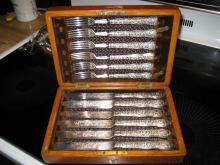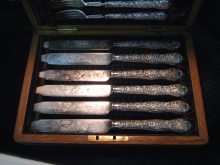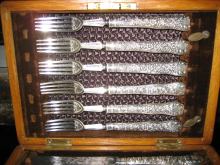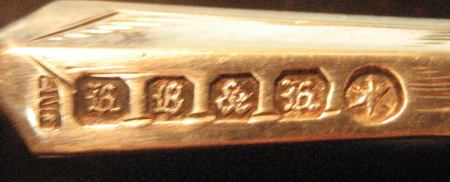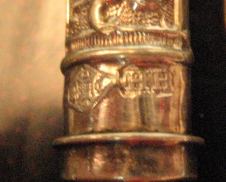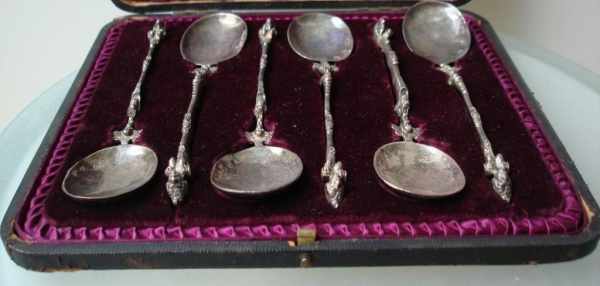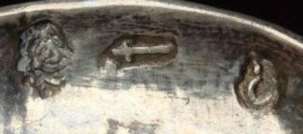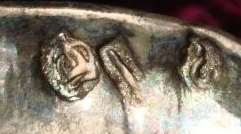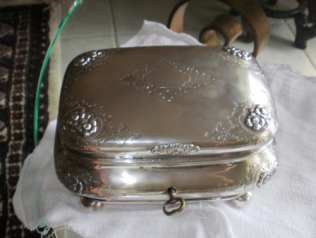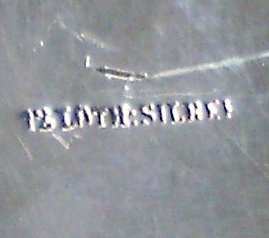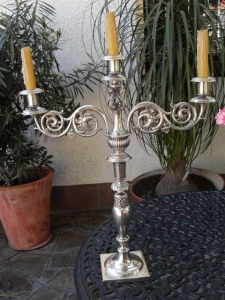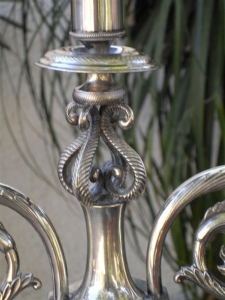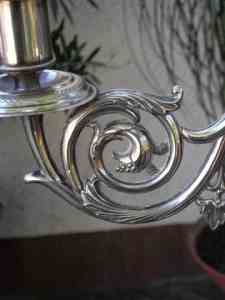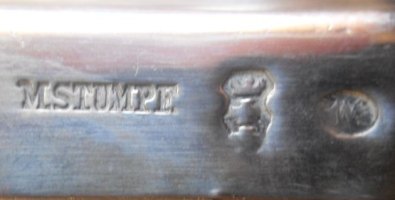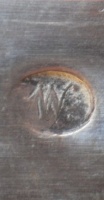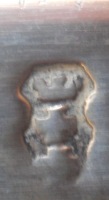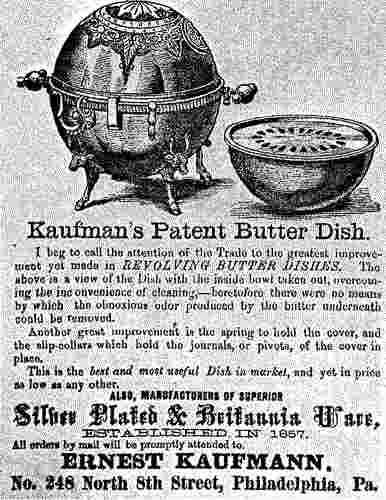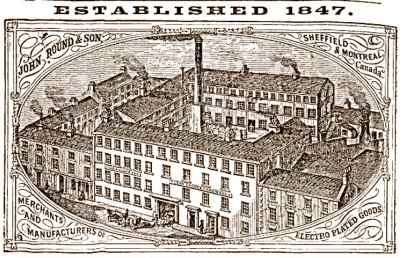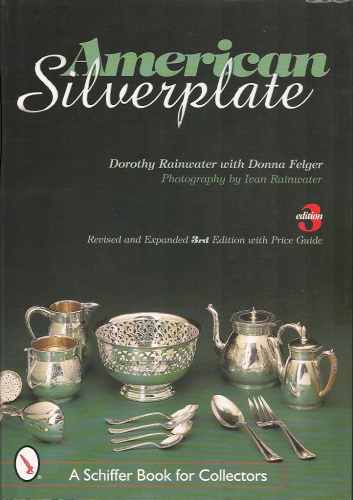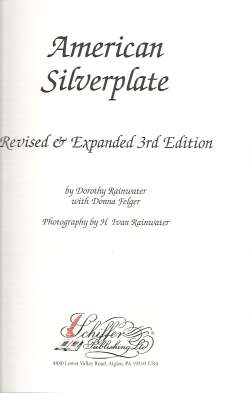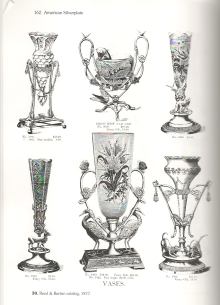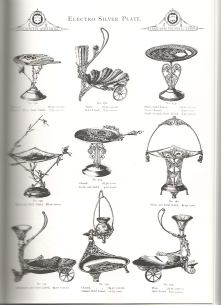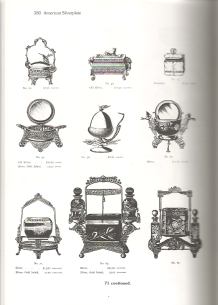 newsletter # 101 October 2012
newsletter # 101 October 2012www.ASCASonline.org SITE MAP
email: silverassociation@yahoo.it
YOUR GUIDE TO OCTOBER NEWSLETTER:
articles
new
members
members' window
|
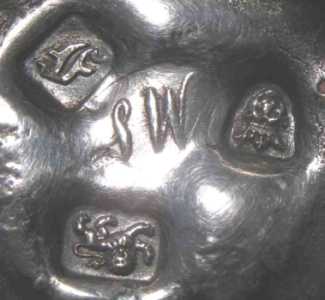
David McKinley presents:
|
New members
Welcome to new ASCAS members:
Tracy Lewis - USA
Edward Millen - USA
Rebecca Nix - USA
David Shorten - England UK
Clifford William Thies - USA
Paola Venturelli - Italy
Kelly Watkins - USA
Mike Wattens - USA
|
top page -
page map |
Members' Window # 101
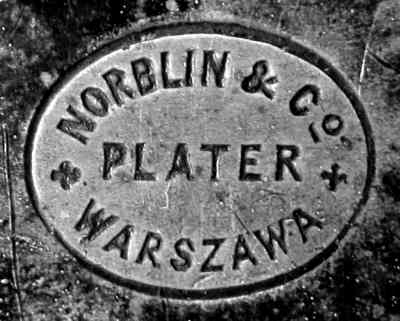
Dr. David N. Nikogosyan
presents:
|
Mail to ASCAS: e-mail silverassociation@yahoo.it
Rosa Pericone writes:
... I'd wish some information about a little object belonging to
my family.
Thanks to your site I know that it is marked Birmingham 1904 but
any further information would be highly appreciated.
Rosa Pericone
Your item is a stamp holder (see my website at
http://www.silvercollection.it/dictionarystampcase.html )
The maker is Adie & Lovekin (see my website at
http://www.silvercollection.it/ENGLISHSILVERMARKSXA3.html#1099ING
)
Giorgio Busetto
Matthew Grieb writes:
... I am unable to identify this dessert flatware set. My Great,
Great, Great aunt gave it to my mother.
Please see attached photos.
Any info would be great.
Thank you,
Matthew Grieb
The maker is Harrison Brothers & Howson (see my website at
http://www.silvercollection.it/electroplatesilverH.html )
The HH mark refer to Henry Harrison for Harrison Brothers (possibly
the ferrule is sterling silver) (see my website at
http://www.silvercollection.it/englishsilvermarksXHDUE.html
)
The lozenge mark is the Patent mark (see my website at
http://www.silvercollection.it/dictionarylozengemark.html )
Further information about the firm is available in my website at
http://www.silvercollection.it/ENGLAHARRISONBROTHERS.html
Giorgio Busetto
Christene de Somer writes:
... May I kindly request for your help in identifying these
silver spoons?
I have absolutely no idea about their origin or age.
Many thanks in advance for your help,
Christene de Somer
Your spoons are "Hanau Silver" made in Germany by J.D.
Schleissner & Söhne c. 1900.
More about Hanau Silver at
http://www.silvercollection.it/dictionaryhanausilver.html
Giorgio Busetto
Norbert Mizne writes:
... I own a silver sugar box with a key. Similar items are shown
in your article #89.
I cannot decipher the markings:
12 LATH:SILRF1
The A is more like an upside U with uneven legs.
T 1 could be an I.
Can you help or advise me?
Thanking you in advance,
Norbert Mizne
Your box is marked "12 LOTH SILBER". German area (Germany,
Austria) used until late '800 a measurement system called
Lothige. Markings were numbers such as 12, 13 or 14. Silver
fineness 12 Loth is .750 silver content, 13 Loth is .812 1/2 and
14 Loth is .875 silver content.
I have scarce knowledge of the matter, but the marking of your
box looks uncommon, lacking any other mark usually present to
confirm its quality of solid silver (town mark, silversmith mark).
I hope that someone better acquainted with the matter will be
able to supply further information about your item.
Giorgio Busetto
Cornelia Thier writes:
... I would like more information on this candle holder (date,
maker). It was bought from a Jewish lady.
It bears the mark with the crown and below two crosses, which I
believe is the Danzig coat of arms.
Also the letter 'W' is stamped next the Danzig hallmark as well
as the name 'M.STUMPE'.
Thanks and kind regards
Cornelia Thier
"A PAGE per MONTH"
In this column we presents a page obtained from makers'
brochures, books, auction catalogs, advertising or whatever
other printed paper, related to silver, that may be of interest
for ASCAS members.
The images will be published at a "low resolution" level and for
private and personal use only
"A WORD per MONTH"
In this column we
present an abstract from a page of the "What is? Silver
Dictionary"
courtesy of


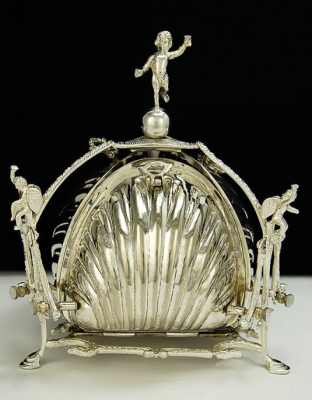
|
FOLDING BISCUIT BOX
|
"A SILVERSMITH per MONTH"
In this column
we present marks, information and history of silversmiths and
silver manufacturers.
This column is published under the kind permission of Giorgio
Busetto's website

|
"A BOOK ON MY SHELF"
In this column we present books, new
or ancient, dealing with silver in all its aspects (history,
marks, oddities...). This isn't a "book review" but only a fair
presentation of some useful "tools" that anyone may have in the
shelf of his bookcase.
ASCAS members are invited to contribute to this column
(click to enlarge images)
In the "book on my shelf" of this month ASCAS presents:

Custom Search
Closing our October 2012 edition of ASCAS Newsletter I hope you have appreciated its content.
Your comments, suggestions and advice will be of great help.
My thanks to Christene de Somer, Matthew Grieb, David McKinley, Norbert Mizne, Dr. David N. Nikogosyan, Rosa Pericone and Cornelia Thier for their invaluable contributions.
Giorgio Busetto
Secretary
ASCAS is a community of people having a common
interest in antique silver.
|

